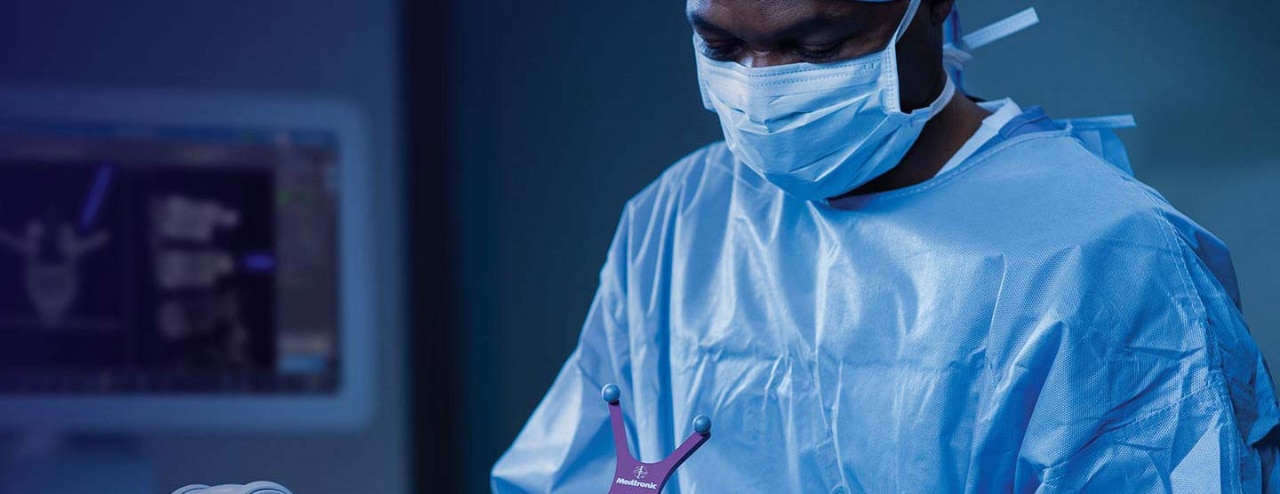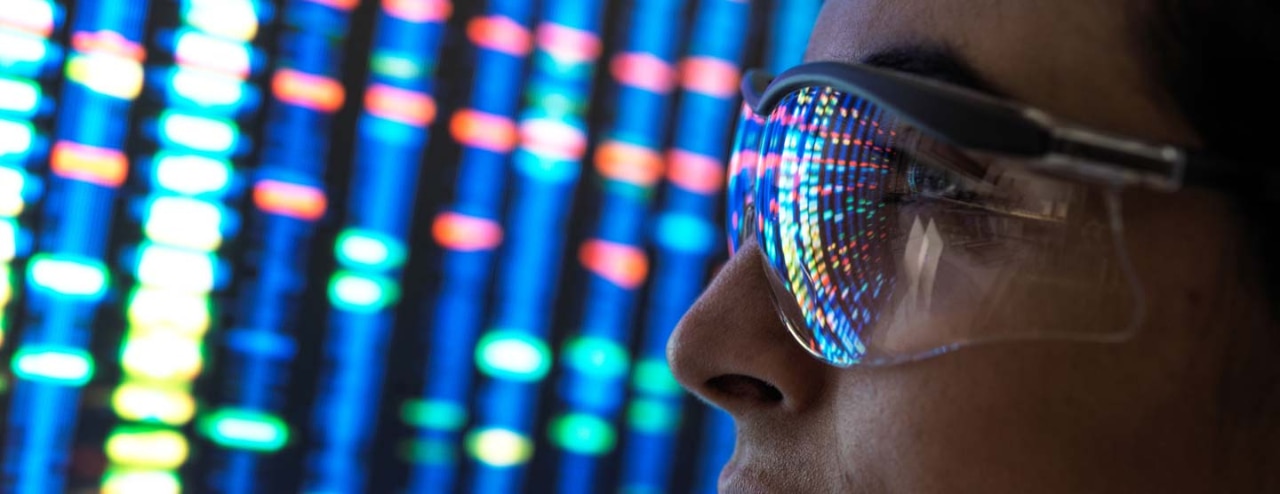

Healthcare technology
The healing power of electricity
The human body is an engineering marvel. Our technologies channel the power of electrical currents to promote healing.
The nervous system is a vast and complex superhighway for electric signals that influence everything from the way your heart beats to how your brain interprets pain. But sometimes these signals can take a wrong turn, sending information to the wrong place. What if those signals could be redirected? Long ago, scientists determined that electrical signals in the body could be channeled to promote healing. And today, because of advances in technology, we can help address debilitating medical conditions such as chronic pain and cancer — all thanks to the power of energy.
By using advanced forms of energy including electricity, heat, and radiofrequency, Medtronic is helping patients around the world manage their disease and live a better life. From pacemakers to neurostimulators, many of our medical devices are designed to tap into the body’s electrical signals and make corrections where needed. Sometimes that means intercepting pain signals from reaching the brain. And sometimes it means disabling electrical signals that contribute to irregular heart rhythms. We are harnessing the creative spark of an idea and turning it into a healthcare solution for patients.
Medtronic co-founder Earl Bakken was eight years old when he saw the movie Frankenstein in the 1930s, sparking a lifelong fascination with the connection between electricity and life itself. Bakken continued to explore the idea that focusing electricity inside the human body could cause reactions at the cellular level. He took that concept and applied it to a groundbreaking creation: the world’s first battery-powered pacemaker.
Abnormalities in the heart’s electrical system can cause the heart rate to be too fast or too slow. If you have a condition called bradycardia, otherwise known as a slow heartbeat, there’s a good chance your doctor may prescribe a pacemaker. Pacemakers help restore the heart's rhythm, by sending tiny electrical signals to increase the heart rate, which relieves the symptoms of bradycardia. Over the years, Medtronic engineers pushed the limits of technology, making the device smaller and smaller. In fact, today we make the world’s smallest pacemaker. But the idea behind the way the device operates is largely the same: It delivers electricity to restore normal heart function.

Pacemakers aren’t the only solution for irregular heart rhythm, also known as atrial fibrillation (AF), a progressive condition that affects more than 37 million people worldwide.1 Another therapy to treat irregular heart rhythm is cardiac ablation, which is a minimally invasive procedure that can use either cryothermal energy or radiofrequency to surgically destroy a small amount of heart tissue causing irregular heartbeats. Medtronic was the first medical device maker to introduce cryoballoons to treat AF. By delivering a refrigerant through an inflatable balloon inserted via a catheter, we can freeze cardiac tissue and disable unwanted electrical signals that contribute to AF.
A study published last year in The New England Journal of Medicine showed that cryoablation using the Medtronic cryoablation system is superior as a first-line treatment for preventing atrial arrhythmia recurrence compared to use of antiarrhythmic drug therapy in patients with symptomatic paroxysmal atrial fibrillation.
Pain is all too common for patients with cancer, especially when cancer cells have spread to the bones. Radiation therapy helps some patients, but not all. A recent clinical study shows cancer patients had significant, swift, and sustained improvement in pain relief after receiving a Medtronic therapy that uses radio frequency ablation to treat bone metastases. Patients in the study reported significant pain relief as early as three days after their procedure and sustained out to six months. These kinds of results show how we’re fulfilling our Mission to alleviate pain and restore health.
Neurons in the brain receive signals from thousands of other cells in the human body, helping power functions such as breathing, eating, walking, and talking. But sometimes those neurons don’t work like they should, causing important signals to get lost in translation. Stimulating the brain with targeted electrical pulses can provide relief for some patients with neurological diseases. Medtronic makes a deep brain stimulation (DBS) system that includes the only commercially available sensing technology with the ability to continuously capture and record brain signals while delivering therapy to patients with neurologic disorders associated with Parkinson’s disease, essential tremor, dystonia, obsessive-compulsive disorder, and epilepsy.
The idea of tapping into the body’s electrical network isn’t new. But its potential is boundless. And we have a long history of taking potential and turning it into game-changing medical devices and therapies. Can electricity be used in new ways to help the body heal? Just keep watching.
Explore topics:





